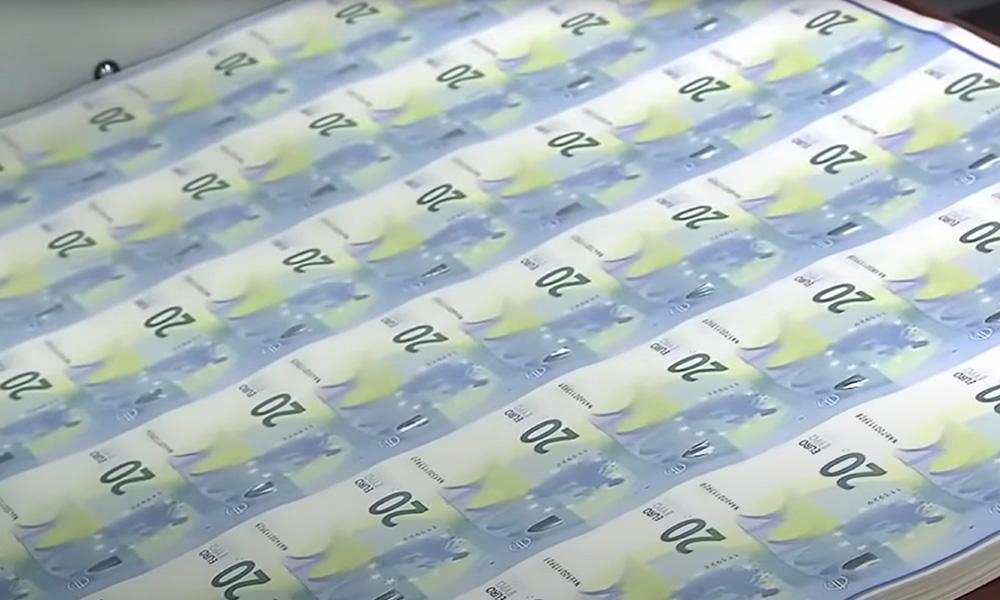Trump's tariff storm sweeps global foreign exchange markets: the US dollar rises strongly, while the Canadian dollar and the euro are under pressure!
2025-07-11 15:18:51

Trump's new tariff policy draws global attention
35% tariffs directly target Canada, 15%-20% cover many countries
On Thursday evening local time (Friday morning Beijing time), US President Trump announced a heavy tariff policy: starting from August 1, a tariff of up to 35% will be imposed on Canadian imports, and a general tariff of 15%-20% will be imposed on multiple other trading partners. This news quickly broke the calm of the foreign exchange market during the Asian session on Friday, and the currency pairs that had been fluctuating in a narrow range began to fluctuate violently. Trump's tariff policy not only targets neighboring Canada, but also implies that similar measures will be taken against other economies such as the European Union, further exacerbating global trade tensions.
The EU may face new tariff threats
Trump also revealed on Thursday that the EU may receive a specific letter on tariff rates by Friday. This statement makes the prospects of US-EU trade negotiations even more confusing. The market is worried that if the EU cannot reach a compromise with the United States, it may face higher tariff barriers, which will further impact the eurozone economy.
The US dollar is riding the wave, and many currencies are under pressure
USD/CAD hits two-week high
Affected by the tariff news, the USD/CAD exchange rate rose rapidly, breaking through 0.5% to 1.3730, hitting a nearly two-week high. It is currently trading around 1.3696, up about 0.3%. As an important trading partner of the United States, Canada is undoubtedly facing a major threat to its economy due to the 35% tariff. IG market analyst Tony Sycamore pointed out: "Canada has suddenly found itself in the line of fire of the trade war, which is obviously not what the market expected. Risk assets may fall further as a result, and the risk of escalation of trade conflicts is also rising."
Euro, Australian dollar and British pound all weakened
The euro was dragged down by the uncertainty of the US-EU trade negotiations, falling 0.3% to $1.1664 at one point, and is currently trading around $1.1686, with a cumulative decline of nearly 0.8% this week. The Australian dollar, as a risk-sensitive currency, was also not spared, falling 0.46% to $0.6556 at one point, and the decline has now narrowed to 0.03%.
The pound was affected by the weak economic data in the UK. The annual GDP growth rate in May was only 0.7%, the lowest level since June 2024, and the monthly industrial output rate fell by 0.9%, the largest drop since April 2024. The pound fell 0.34% to 1.3531 against the US dollar, close to a three-week low.
Yen and New Zealand dollar underperform
Trump previously announced a 25% tariff on Japan, causing the yen to fall as much as 1.6% this week. On Friday, the dollar rose 0.64% against the yen to 147.18, a three-week high. The New Zealand dollar was also under pressure, falling 0.45% to $0.6006. Although the Brazilian real performed steadily on Friday, at 5.5321, it is expected to fall by 2% this week, the largest weekly drop in nearly five months. Brazilian President Lula said that he would respond to the US threat of a 50% tariff through diplomatic means, but if the tariff takes effect on August 1, Brazil will also take retaliatory measures.
Market sentiment is sluggish, and the US dollar index rises against the trend
Global trade outlook is clouded
Although the market's reaction to Trump's tariff announcement was relatively restrained, far less than the sell-off after "Liberation Day" in April, investors' concerns about the outlook for global trade still linger. The August 1 deadline for tariffs to take effect has become the focus of market attention, and the possibility of an escalation in the trade war has kept investors on high alert. Against this backdrop, the U.S. dollar index gained support, rising 0.3% to 97.89 at one point, and is expected to record a 0.8% gain this week.
Uncertainty supports dollar
Ray Attrill, head of foreign exchange research at National Australia Bank (NAB), said: "The current uncertainty is providing some support for the stability of the US dollar. If this situation continues for a few weeks, the strong performance of the US dollar may not be surprising." He pointed out that the market has not fully digested the tariff news, especially the 35% tariff faced by Canada exceeded market expectations, which may further push up the US dollar.
Why is the stock market so “cold” about tariffs?
It is worth noting that although Trump's tariff policy has attracted widespread attention, the overall reaction of Asian stock markets has been relatively mild. Tony Sycamore analyzed: "Previously, the market had largely ignored the news related to tariffs, but the situation in Canada was obviously unexpected." This gap shows that investors may have underestimated the enforcement of Trump's trade policy, and the market trend in the next few weeks will depend on how countries respond to this wave of tariffs.
Summary: New foreign exchange market pattern under the shadow of trade war
Trump's latest tariff policy has undoubtedly dropped a bombshell on the global foreign exchange market. The US dollar has become the first choice of safe-haven assets against the backdrop of increasing uncertainty, and has recorded gains against a variety of currencies. The Canadian dollar is under pressure due to high tariffs, and the euro has weakened due to the uncertain prospects of US-EU trade negotiations. The British pound, Australian dollar, Japanese yen and other currencies have not been spared. The market remains highly concerned about the deadline for the tariffs to take effect on August 1, and the uncertainty of the global trade pattern has provided continued support for the US dollar. In the future, investors need to pay close attention to the responses of various countries to tariff measures and the market chain reaction caused by them.
At 15:17 Beijing time, the US dollar index is currently at 97.73.
- Risk Warning and Disclaimer
- The market involves risk, and trading may not be suitable for all investors. This article is for reference only and does not constitute personal investment advice, nor does it take into account certain users’ specific investment objectives, financial situation, or other needs. Any investment decisions made based on this information are at your own risk.










